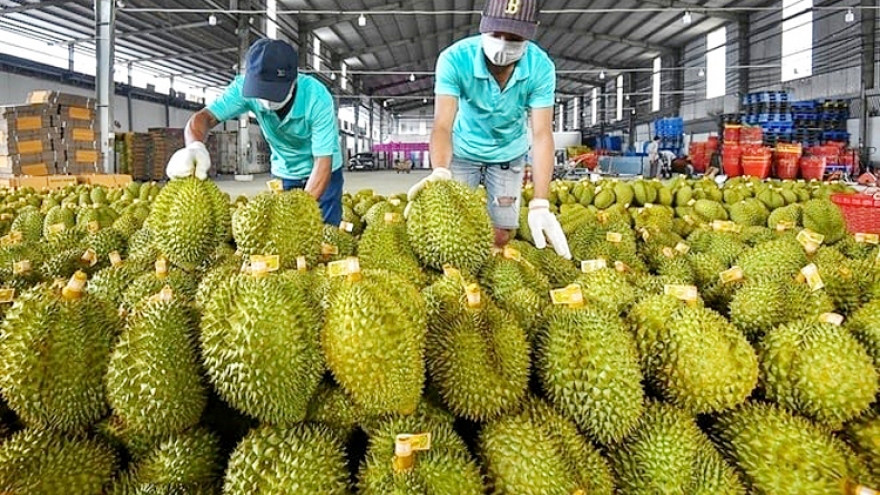Vietnam harvests more than 1.5 million tons of durian annually. Yet, durian imports have seen an unexpected spike, rising sixfold compared to the same period last year.

Vietnam is the world’s second-largest durian producer and exporter, after Thailand. In less than a decade, the country’s durian industry has expanded rapidly in both cultivation area and output, growing from 32,000 hectares in 2015 to nearly 180,000 hectares by 2024 - an increase of nearly six times.
With output surpassing 1.5 million tons in 2024, durian has become one of the fastest-growing fruits in Vietnam. Export revenue from this “king of fruits” exceeded 3.2 billion USD in 2024.
However, in the first four months of 2025, the durian sector has faced a sharp decline in both output and export value, reaching only 130 million USD, significantly lower than the 500 million USD recorded during the same period last year.
Durian prices have also dropped considerably compared to early 2024. Currently, Monthong and Ri6 durians are priced between 35,000 and 80,000 VND per kilogram (approximately 1.38 to 3.15 USD), depending on the variety. The decline is attributed to export challenges in the Chinese market, where customs authorities have tightened inspections for cadmium and the yellow dye auramine O in durians.
In stark contrast to the sluggish export figures, durian imports into Vietnam have soared.
According to preliminary data from the General Department of Customs, durian imports in the first four months of this year reached nearly 9.3 million USD, up 518% year-on-year - about six times higher. The share of durian in Vietnam’s total fruit and vegetable imports rose from 0.24% during the first four months of 2024 to 1.17% in the same period this year.
In 2024, durian imports totaled 16.2 million USD, a dramatic 727% increase compared to the previous year.
Commenting on the sudden surge in durian imports, the CEO of a fruit export company explained that importing a product in which Vietnam has strong production is not unusual. Most imported durian products are Musang King durian pulp or whole fruit from Malaysia and Thailand - varieties that are either not yet cultivated in Vietnam or have limited domestic availability.
Additionally, the beginning months of the year mark the off-season for durian in Vietnam’s Mekong Delta provinces. As supply during this period is lower than in the main season (April to September), and demand increases for festive occasions such as Lunar New Year, imports naturally rise.
These imported durians, particularly whole fruits and durian pulp, are typically sold at premium prices in Vietnam.
For instance, Fumoni durian sells for 200,000-340,000 VND/kg (about 7.87-13.38 USD), Kanyao ranges from 430,000-700,000 VND/kg (16.92-27.56 USD), Black Thorn costs between 900,000 and 1 million VND/kg (35.39-39.33 USD), and Musang King is priced at 650,000-900,000 VND/kg (25.55-35.39 USD). Other imported durian varieties generally range from 400,000 to 500,000 VND/kg (15.75-19.66 USD).
However, these types are typically imported seasonally. On the market, only frozen Musang King durian pulp from Malaysia is available year-round.
Tam An